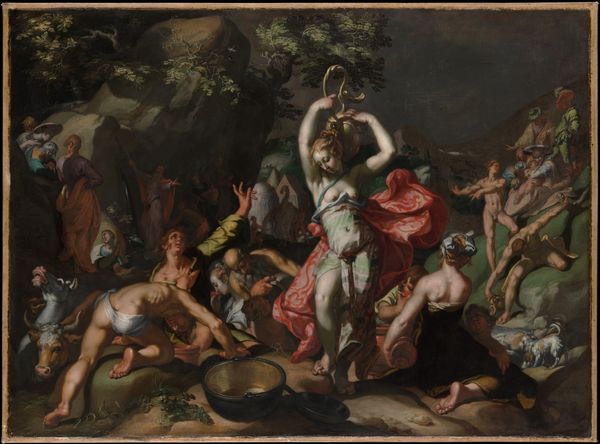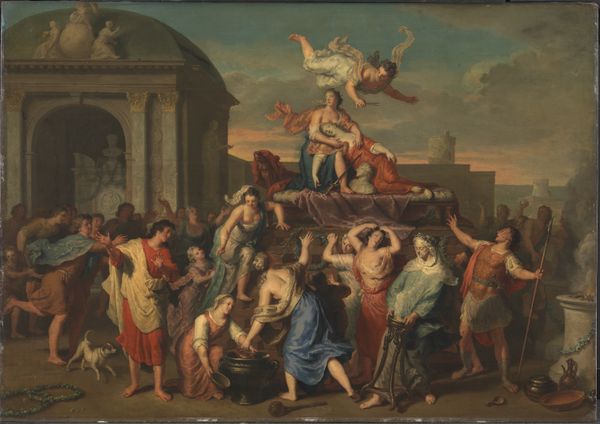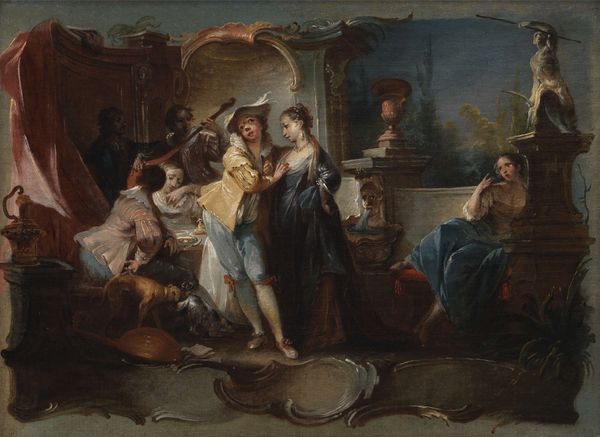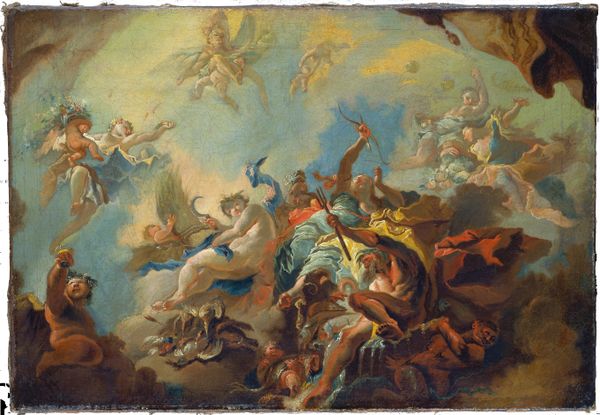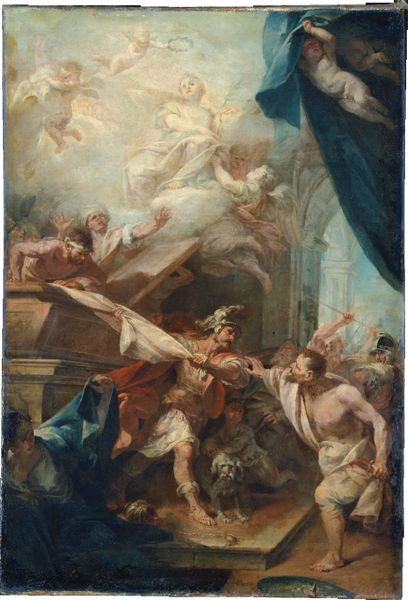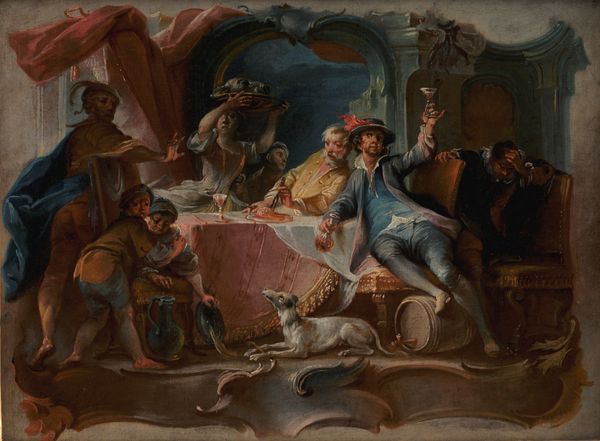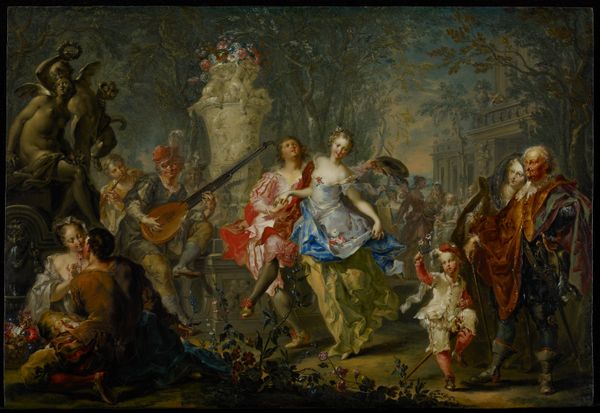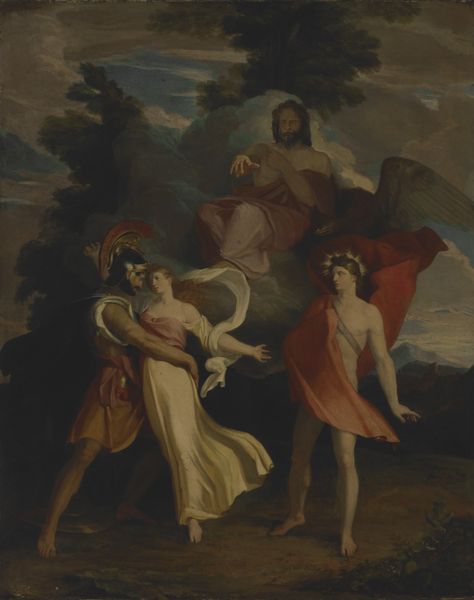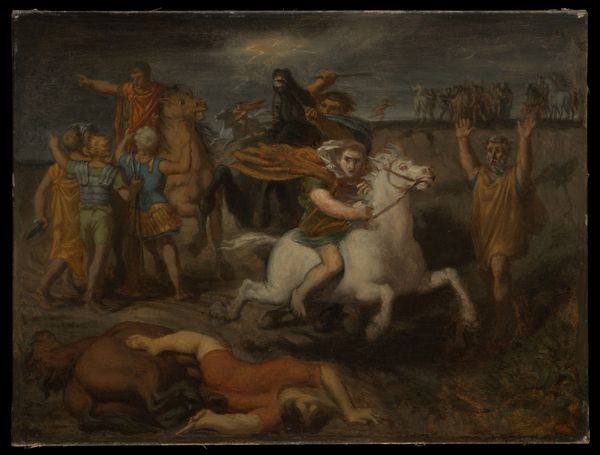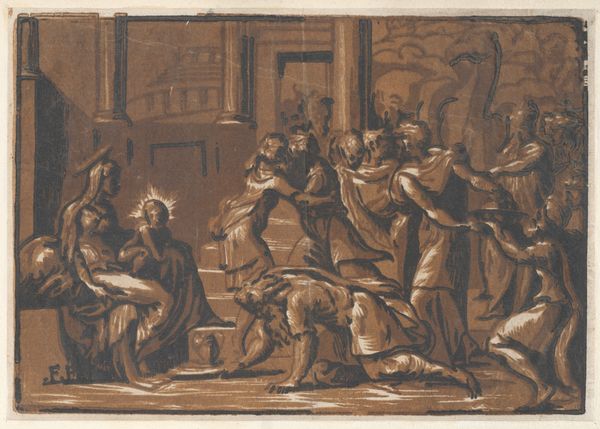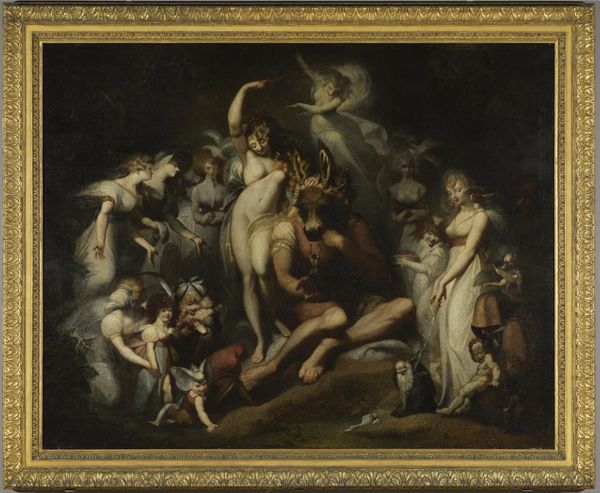
The Restoration of the Catholic Religion in Strasbourg 1676 - 1686
0:00
0:00
painting, oil-paint
#
portrait
#
allegory
#
baroque
#
painting
#
oil-paint
#
figuration
#
history-painting
#
portrait art
#
angel
Dimensions: 18 5/8 x 22 in. (47.3 x 55.9 cm)
Copyright: Public Domain
Curator: At first glance, this painting is overwhelming with movement and drama. Editor: That’s fair. The Baroque style does lend itself to the dramatic. This is Claude Guy Hallé’s, "The Restoration of the Catholic Religion in Strasbourg," painted between 1676 and 1686. It's an oil on canvas and is currently held at the Metropolitan Museum of Art. Curator: I see figures battling a serpent and demonic figures tumbling down the steps of what seems to be a temple, or perhaps a government building, under the glowering looks of crowned figures. What is happening in Strasbourg? Editor: Well, situating this painting within its socio-political context reveals the very real religious conflict of the time. Strasbourg, initially Protestant, came under French control, resulting in a Catholic restoration. This painting operates as allegorical propaganda. Curator: Propaganda you say? Interesting... Can you explain it in more detail? I think my first reaction to this piece, and to any painting dealing with religion, would be shaped by issues of power and identity. Editor: Precisely. Hallé visually asserts Catholic dominance. Note Louis XIV standing prominently, bathed in light and offering what appears to be religious law to the city. The defeated figures signify Protestantism being overthrown by Catholicism. Curator: So it’s not just a religious shift, but an imposition. The light certainly plays a part; it singles out figures of importance. Does that have further symbolic implications? Editor: Light as a symbol of divine favor is a typical Baroque trope, particularly when used by artists working for royal or religious institutions. Consider the ways Louis deployed the visual arts to broadcast his absolute power, linking himself to divine will. The artist certainly understands their assignment. Curator: Hallé appears to present a perspective steeped in tradition, and its visual messaging is blatant, I must say. I’m more interested in seeing beyond these symbols and trying to view this historical representation with today's understanding of gender, and intersectionality to start. But the imposing nature is undeniable... Editor: Perhaps we should unpack those threads for our next visitor? Curator: Absolutely, I think there is certainly much more to say here!
Comments
No comments
Be the first to comment and join the conversation on the ultimate creative platform.
